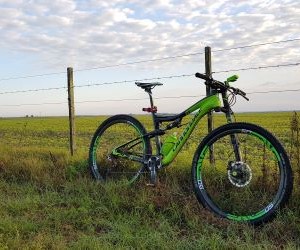Explore the best cycling and bike touring routes in Raleigh, from scenic greenways to wooded trails and smooth city rides—perfect for a vacation on two wheels.
HOW DO I PICK THE RIGHT GEAR FOR BIKE TOURING?
Choosing the right gear for bike touring is not just about buying the lightest or most expensive equipment; it’s about balance, functionality, and comfort. From selecting the right type of bike to knowing which clothing and camping gear to carry, every choice impacts your performance and overall experience. This guide will break down the process of picking the best gear step by step so you can plan your tour with confidence and avoid common mistakes.

Choosing the right bike
When preparing for bike touring, the first and most critical choice is the bike itself. Touring bikes differ from road bikes, mountain bikes, and gravel bikes in their geometry, stability, and load-bearing capacity. A proper touring bike should balance comfort with durability, allowing you to ride long distances without excessive fatigue while carrying luggage securely.
Frame materials and geometry
Steel frames are the gold standard for bike touring due to their strength, repairability, and comfort on long rides. Aluminum frames are lighter but less forgiving on rough terrain, while carbon is often avoided because it’s harder to repair on the road. Geometry matters too—touring bikes usually feature longer wheelbases for stability and relaxed angles for comfort over long days.
Wheels, tires, and gearing
Wheels should be 32–36 spokes for strength, and tires between 32mm and 45mm provide the right balance of comfort and durability. Wider tires give more stability when carrying weight, while narrower ones roll faster on pavement. As for gearing, prioritize a wide range: low gears for steep climbs with luggage, and higher gears for cruising on flats.
Steel touring frames offer repairability worldwide.
Wider tires help manage heavy loads and rough terrain.
Front and rear racks should be compatible with panniers.
Disc brakes are more reliable than rim brakes under heavy loads.
Ultimately, your bike choice depends on your touring style—whether you’re tackling paved roads, gravel trails, or a mix. Reliability should outweigh speed or aesthetics when deciding on your touring setup.
Clothing and personal gear
What you wear and pack for bike touring determines your comfort level on long rides. The challenge lies in preparing for multiple climates, staying lightweight, and keeping gear practical. Unlike racing, touring prioritizes durability, moisture control, and flexibility in layering.
Essential clothing for bike touring
Cycling shorts with padded inserts (chamois) reduce saddle discomfort, while moisture-wicking jerseys help regulate temperature. For outerwear, a lightweight rain jacket and windbreaker are indispensable. Layering is crucial: merino wool base layers keep you warm without overheating, and they resist odor buildup over multiple days.
Personal gear and accessories
Beyond clothing, accessories can make or break your trip. Sunglasses protect against UV rays and wind, gloves prevent hand fatigue, and a helmet is non-negotiable. For off-bike time, pack casual but compact clothes such as a lightweight hoodie, sandals, and a spare set of socks.
2–3 cycling jerseys and shorts to rotate.
Compact rain gear for unpredictable weather.
Multi-use layers like merino wool shirts.
Light shoes or sandals for camp use.
Packing minimal but versatile clothing reduces bulk while keeping you prepared. Always prioritize quick-dry fabrics and avoid cotton, which retains moisture and adds weight. Think in terms of function, not fashion—touring is about endurance and practicality.
Camping and packing strategies
Bike touring often includes overnight stays outdoors, which requires careful packing and smart camping choices. Choosing the right camping gear ensures safety, comfort, and efficiency while managing limited space on your bike.
Camping essentials
A lightweight tent or bivy bag, sleeping bag suited to the season, and an inflatable sleeping pad are the core of your camping kit. For cooking, a compact stove and titanium cookware offer versatility without adding bulk. Don’t forget essentials like a headlamp, water filter, and repair kit for both bike and camping gear.
Smart packing techniques
Packing strategies determine how easy your ride feels day after day. Panniers distribute weight evenly, while handlebar and frame bags give easy access to essentials. Heavier items should be placed low and toward the front for stability. Packing cubes or dry bags keep gear organized and weatherproof.
Tent, sleeping bag, and pad should weigh under 3kg combined.
Use front panniers for heavier gear to balance handling.
Keep snacks, maps, and rain gear in accessible bags.
Always carry spare tubes, tools, and a first-aid kit.
A golden rule: pack less than you think you need. Excess weight quickly turns enthusiasm into exhaustion. Efficient packing lets you focus on the joy of the ride rather than managing clutter or fatigue.
In conclusion, the right camping and packing strategies transform bike touring from a logistical challenge into a liberating adventure. By keeping your kit lightweight, versatile, and organized, you maximize both efficiency and enjoyment on the road.
YOU MAY ALSO BE INTERESTED






